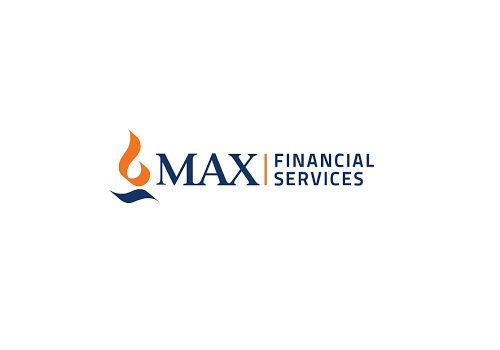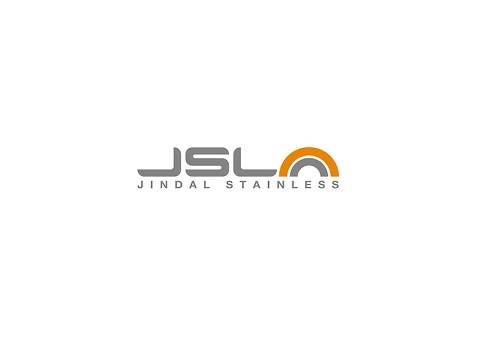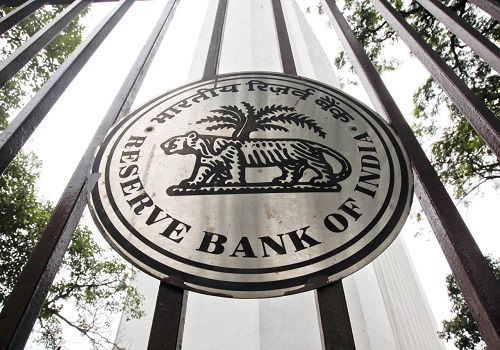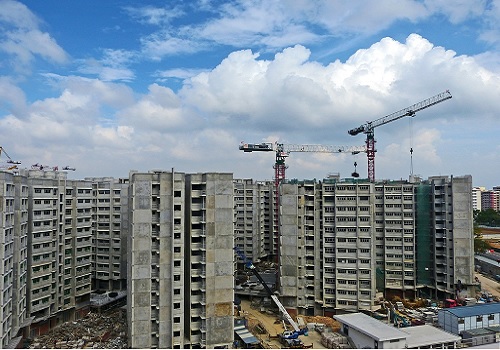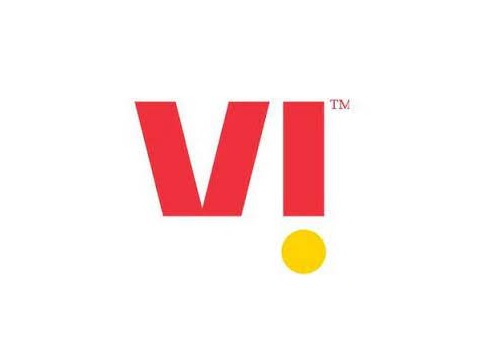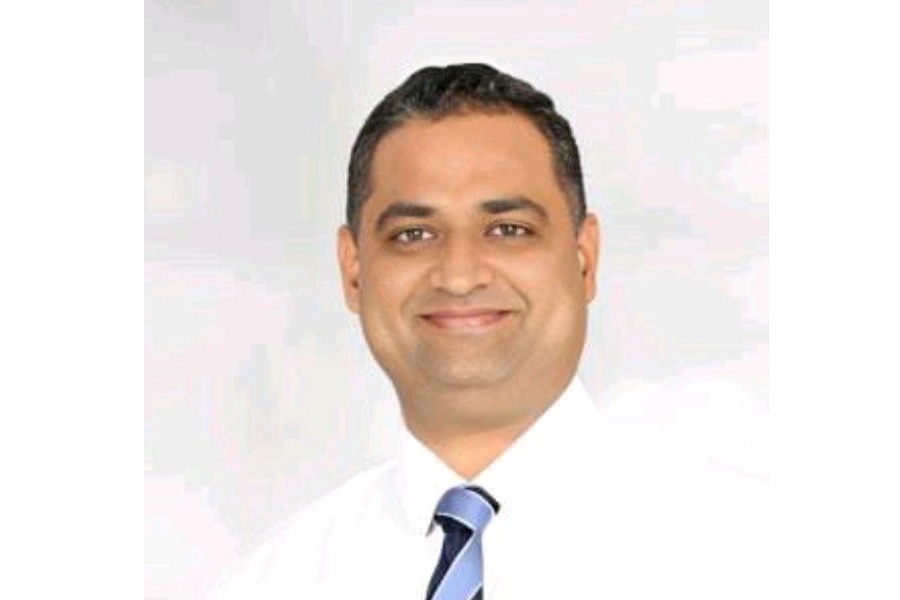Trends on expected lines across BFSI 3QFY24 Quarterly Review by Kotak Institutional Equities

Earnings for the quarter across banks, NBFCs, capital market players and insurance did not show any worrying signs—(1) Banks: Earnings growth is slowing down led by slower NII growth due to NIM compression that slows down operating profits. Asset quality, despite concerns raised on unsecured loans, is still showing improving/stable trends. (2) NBFCs reported strong loan growth along with NIM compression. Asset quality performance was mixed across segments (tractors and unsecured loans under the scanner). (3) Capital market companies benefited from strong sector tailwinds spilling over into 4Q.
Banks: NIM compression and slowdown in operating profits on expected lines
Banks under coverage delivered 13% yoy earnings growth, led by 11% yoy NII growth and ~45% yoy provision decline. Operating profit growth was lower due to higher staff costs for SBI, but the overall trend has slowed, led by NIM compression across banks. Loan growth is still showing stable trends (adjusted for the HDFC Bank merger) at ~15% yoy. Credit costs are still running well below the long-term average, led by lower slippages and we have not seen any worrying trends on slippages, especially from unsecured loans this quarter. RoE is closer to long-term averages for all banks. The impact of CET-1 across banks due to changes in RWA was negligible. In the near term, we expect NIM compression to continue, as deposit growth is still yet to catch up with loan growth. We have seen a re-rating in public banks and would have a more cautious approach to build an investment theme on credit costs, but would shift our preference to large banks over mid and small tier banks.
NBFCs: Growth peaking, NIMs flattening
Non-banks under coverage continued to report strong loan growth, offset by NIM compression. While sequential trends in NIM are encouraging (reflecting near bottoming), loan growth may moderate on a high base and softening momentum in select segments. Asset quality performance has been mixed with segments such as tractors and unsecured loans under the scanner. We remain assertive with Shriram Finance and LIC Housing Finance as favored picks in large names and Aavas and Home First in affordable HFCs. Price correction makes valuations reasonable, warranting a relook at Bajaj Finance.
Capital markets: Earnings follow strong sector tailwinds
Capital market-oriented names enjoyed a quarter of strong sector tailwinds of retail equity flows, primary market issuances and trading volumes. Among AMCs, HDFC AMC and Nippon AMC delivered ~25% yoy core earnings growth, led by strong revenue growth (~20%), with operating leverage benefits. Intermediaries (CAMS/Kfin) also benefited from strong equity AUM growth, stable yields and pick-up in non-MF revenues (20/25% yoy core earnings growth). 360 One had muted performance (8% earnings growth), reflecting expected compression in yields and higher expenses. Among rating agencies, CRISIL reported stronger earnings growth (~30% yoy), led by lower costs.
Banks: Good quarter, but weak operating profit growth
Asset quality stays robust, with NPL ratios near all-time low
3QFY24 was another quarter where asset quality for banks continued to improve. The proportion of delinquent loans on the balance sheet continued to decline. The stock of NPLs has been steadily coming down sequentially for PSU banks (Exhibit 7). Even the non-NPL stress book (restructured advances) has been broadly under control and not a source of worry.
Gross slippages for the sector continued to be in control. Slippages have shown a decline qoq. We understand that incremental stress formation in the banking system is low and majority of the stressed restructured loans have already slipped. Slippages for frontline banks are near or even below pre-Covid levels. At the same time, recoveries and upgradations continued to be healthy, resulting in a simultaneous write-back of provisions as well. Banks are also seeing healthy recoveries from written-off accounts, which are further supporting profitability. Note that most recoveries are now coming from granular exposures in retail and MSME, as most lumpy recoveries are already behind us. Many banks have been offering various settlement schemes to delinquent customers to resolve stress on the balance sheet.
Asset quality is unlikely to be a concern for most banks in the medium term, unless there is a sharp macroeconomic downturn—a relatively low probability event, in our view. Recently, there have been some concerns around the sharp growth in unsecured credit (primarily, personal loans and credit cards) over the past couple of years. We do not find the situation to be alarming yet, as the share of unsecured credit in banking sector credit is still fairly low. Furthermore, we understand that banks have a relatively low exposure to the riskier segment of small ticket personal loans (which has seen higher delinquencies recently). Our conversations with industry participants indicate that banks have already begun to tighten their credit filters as a response to potential risk building up. As a consequence, the growth in unsecured loans has cooled off a bit for most lenders.
We expect incremental slippages to be low and recoveries/upgradations to stay strong, resulting in low credit cost in the near term. We do not see any immediate reason to change our view on asset quality or credit cost for the banking system. We believe that we are in a period where slippages and credit cost for the banking system will stay low for some more time. Nevertheless, we continue to be watchful about how the situation evolves.
Credit growth is quite broadbased and stood at ~22% yoy for banks under coverage
For banks under coverage, credit growth stayed healthy at ~22% yoy in 3QFY24—up marginally from ~21% yoy at the end of the previous quarter. Growth was strong for private banks (~35% yoy) and healthy for PSU (~14% yoy) banks. According to the latest RBI data, overall credit growth for the banking system has stayed healthy at ~20% yoy in January 2024, supported by the merger of HDFC Ltd into HDFC Bank, while it stood at ~16% yoy adjusted for the impact of the merger.
Growth in loans to large corporates has seen a modest improvement (up 9% yoy in December 2023). The MSME industry segment has been seeing robust credit growth over the past few quarters, but growth has moderated now to ~13% yoy. Retail credit growth has stayed healthy at ~30% yoy, with housing credit up ~36% yoy and vehicle loans up ~20% yoy. Credit card balance growth has also stayed strong at 33% yoy, whereas loans against gold jewelry were up 19% yoy.
We saw credit growth staying broadbased during 3QFY24. While frontline private banks continued on a robust growth trajectory, even the large PSU banks showed very healthy growth. At the same time, some regional private banks also showed meaningful recovery in credit growth, indicating a change in the stance from asset quality management toward growth. Segmental credit growth data reported by individual banks also indicates that credit growth has been relatively more broadbased across sectors of retail, MSME and large corporate, but has been led by retail. We expect retail and MSME to continue to drive growth as well. In the case of some PSU banks, the international loan book saw robust growth in FY2023, but that growth is also cooling off.
Margins stay under some pressure, as deposit re-pricing continues
We saw most banks showing a declining trend on NIM during 3QFY24. Yields were either flat or slightly higher qoq, with some amount of re-pricing of MCLR-linked loans. However, re-pricing of deposits was relatively faster. Most banks have indicated that a further increase in cost of deposits is unlikely to be sharp from here.
At a system level, deposit growth stood at ~13.2% yoy (~12.5% yoy adjusted for the HDFC merger). Thus, deposit growth continues to be outpaced by credit growth at 20% yoy, resulting in almost complete utilization of excess liquidity. We note that PSU banks stand with relatively lower CD ratio and hence, better positioned on the liquidity front.
According to the latest data from the RBI, term deposit rates (on outstanding term deposits) were up ~180 bps to ~6.8% from the bottom of ~5.0%. Both private and PSU banks had kept their term deposit rates stable for almost a year. Wholesale deposit costs (as measured by CD rates) seemed to have stabilized at ~7.1-7.2%, but it has inched up again in the past few months to ~7.9%. We have also seen some large private banks hiking term deposit rates by 10-15 bps in the past couple of months. In our view, the outlook on NIM for the banking system stays uncertain, as the competition for deposits to fund business growth could exert further upward pressure on deposit rates.
Healthy trends in non-interest income
Most banks reported modest treasury income during 3QFY24. We remain optimistic on the outlook for treasury income, as bond yields are not expected to move up much from here. At the same time, fee income trend should be healthy, given the momentum in business. Similarly, card spends have been on a steady growth path, which also supported fee income growth for card issuers.
Operating costs continue to inch up swiftly
Most PSU banks saw a swift increase qoq in operating costs, led by the staff expense line. This was mainly owing to wage provisions toward the 12th bipartite settlement. Private banks also continued to see their operating costs inch up swiftly, primarily led by higher business volume and continued investment in technology.
NBFCs: Growth peaking, NIMs flattening
Non-banks under coverage continued to report strong loan growth, offset by NIM compression. While sequential trends in NIM are encouraging (reflecting near bottoming), loan growth may moderate on a high base and softening momentum in select segments. Asset quality performance has been mixed with segments such as tractors and unsecured loans under the scanner. We remain assertive with Shriram Finance and LIC Housing Finance as favored picks in large names, and Aavas and Home First in affordable HFCs. Price correction makes valuations reasonable, warranting a relook at Bajaj Finance.
Loan growth may top off
NBFCs under coverage (excluding LICHF) reported 21-35% yoy loan growth, with 3-8% qoq growth. We believe that loan growth has topped off for most and expect some moderation, though not significant. NBFCs reported 5-12% qoq loan growth in 4QFY23; on a higher base, we expect yoy growth to moderate by 4QFY24E, even as monthly momentum is holding well. We model 20-40% yoy loan growth (excluding LICHF) for 4QFY24E. Overall, growth guidance for FY2025E will also remain constructive. Red flags in select segments such as unsecured and tractor loans (discussed later) would likely prompt companies to be a bit watchful.
Mixed trends in asset quality
NBFCs have seen some red flags in select segments of unsecured loans; tractor loans in select cohorts have been weak. Bajaj Finance guided for higher credit costs, SBI Cards remains a bit cautious in the near term. NBFCs are slowing down in fintech partnerships. Mahindra Finance reported weakness in select tractor cohorts in 2QFY24, with no meaningful improvement in 3Q; its collection trends in January 2024 seem average and the company may miss its FY2024E credit cost guidance. Other segments (cars, CVs, housing and LAP) have not shown any major rise in NPLs; while this may be partially masked by higher loan growth, even early delinquencies (from NBFCs that report these datapoints) do not show any sign of concern.
Overall, asset quality is holding on better than envisaged. 9MFY24 trends on ECL coverage suggest a decline in coverage for most. FY2023 was the best year, with a sharp decline in ECL (on a high base), boosting earnings. While gross stage-2 and gross stage-3 reduced this year as well, the pace of improvement is lower. On a low base, yoy growth in provisions/credit costs was higher than loan growth in 9MFY24 for most players. We will continue to conservatively build some increase in ECL in FY2025E. Nevertheless, considering better-than-expected asset quality performance, we have reduced our credit cost estimates in most cases during the quarter.
NIM bottoming out as NBFCs focus on yields
NBFCs continue to report NIM compression, reflecting rate transmission on the liability side, which is not fully passed on to assets. Interest rates have been sticky versus the expectation of rate cuts by most CFOs in 2HFY24, leading to pressure on NIM. Rate transmission, though sluggish, is gradually taking shape. Overall, yields for most NBFCs were better than our estimates for the quarter. While we do not see any major blanket rate hikes (other than unsecured loans) on loan assets, change in business mix and focus on fees and other income will improve income/realizations. With an increase in commissions in credit protect policies, non-interest and insurance income are set to improve for almost all players.
Increase in risk weights for bank loans to NBFCs is driving up cost of borrowing. Incremental cost of funds is a tad higher than average cost, leading to some inch-up in overall borrowings costs. Rate transmission, reflecting an increase in MCLR, is already reflected in current borrowings costs. We expect costs to inch up marginally from 3QFY24 levels. We find tough negotiations between banks and NBFCs on funding rates; while the former are arguing for higher rates due to an increase in risk weights, the latter are keen to hold on. Competitive intensity within the banking system is keeping borrowings costs low for NBFCs. Large and fast-growing players (Bajaj Finance, LTFH, Muthoot, Shriram Finance and others) may have relatively lower negotiating power and hence, guided for a rise in costs.
Bajaj Finance’s upgrade was key change in the quarter
With significant correction in Bajaj Finance’s stock price, we upgraded the stock to ADD from REDUCE. We believe that most concerns (inching up of credit costs, change in management and eventual conversion to bank) are in the price at current levels. The company expects a rise in delinquencies to be transitionary and has toggled across products in the past; we bake in lower loan growth (~25%) to reflect the same.
Performance highlights of key diversified financial companies: 3QFY24
4 Aavas. Aavas reported a PAT of Rs1.2 bn, up 9% yoy and core PBT of Rs1.1 bn was up 3% yoy. NII growth was muted at 6% yoy, while AUM grew 23% yoy and 5% qoq. Calculated margins compressed sharply (43 bps qoq) to 7.0%, driven by (1) a 37 bps qoq decline in yields to 13.8% and (2) a 20 bps rise in cost of borrowings to 7.7%. The drawdown of liquidity buffers (down 11% qoq) offset spread pressures. Operating expenses grew at a slower pace (up 12% yoy), leading to a moderate cost-to-AAUM ratio of 3.4% in 3QFY24. Gross stage-2 and stage-3 loans were stable qoq. Similarly, overall ECL coverage was also flat qoq at 0.65%. Credit cost was moderate at 0.2% in 3QFY24.
4 Aptus. Aptus reported a PAT of Rs1.6 bn in 3QFY24, up 25% yoy. Core PBT was up 21% yoy to Rs2.0 bn. NII growth was 20% yoy, driven by 28% yoy AUM growth; yoy NIM compression of 83 bps had a moderating effect. Operating expenses were up 21% yoy, lower than AUM growth of 28% yoy, leading to a moderation in the cost-to-AAUM ratio to 2.6% (2.7% in 3QFY23 and 2.9% in 2QFY24). Provisions were up 3% yoy, as the gross stage-3 ratio was flat qoq at 1.2%; gross stage-2 ratio inched up 5 bps qoq to 4.9%.
4 Bajaj Finance. Bajaj Finance reported PAT of Rs36 bn, up 22% yoy. Core PBT, at Rs58 bn, was up 30% yoy. NII was up 29% yoy, driven by 35% yoy loan growth. NIM compressed 9 bps qoq due to interplay of (1) 9 bps qoq moderation in yields, (2) 10 bps qoq rise in cost of borrowings and (3) benefit of capital issuance (Rs 88 bn in November 2023). Operating expenses growth was lower than AUM growth at 22% yoy and 5% qoq, leading to a 10 bps qoq decline in the cost-to-AAUM ratio to 4.2% in 3QFY24. Credit costs were slightly elevated at 1.7% in 3QFY24, overall ECL coverage was flat qoq at 1.6%.
4 Cholamandalam. Chola reported 28% growth in PAT, 5% above estimates. Loan growth of 40% (up 8% qoq) drew 36% NII growth. While borrowing costs inched up a bit, higher lending yields and recent capital issuance partially offset it. Insurance income boosted fees (up 90% qoq). Furthermore, operating expenses were up 41% yoy and 12% qoq, leading to an elevated cost-to-AUM ratio of 3.3%. Gross stage-3 ratio was down 16 bps qoq, while gross stage-2 ratio declined 14 bps qoq. Write-offs were a tad higher, as the company cleaned up NPLs, mostly in the CSEL segment.
4 Five Star. Five Star reported PAT of Rs2.16 bn, up 44% yoy and core PBT was up 40% yoy. Loan book was up 43% yoy and 8% qoq to Rs89 bn, driven by 33% yoy growth in disbursements. Margins compressed 180 bps yoy and 50 bps qoq, led by higher leverage; management increased liquidity buffers during the quarter (Cash + investments up to Rs18 bn from Rs13 bn in 2QFY24). The cost/AUM ratio declined to 6.6% from 7.0% in 2QFY24 and 8.0% in 3QFY23. Credit costs were stable at 50 bps.
4 Home First. Home First reported PAT of Rs788 mn, up 34% yoy. NII was up 24% yoy owing to 34% growth (disbursements up 29% yoy) in loans and NIM compression of 69 bps yoy to 7.4%. Yield of 14.4% was down 18 bps qoq, likely due to repricing of loan assets, even as cost of funds inched up 6 bps qoq to 8.1%, leading to 43 bps qoq NIM compression. Growth in operating expenses was elevated at 38% yoy; the cost-to-AAUM ratio remains elevated at 2.8%. Bounce rates inched up to 15.1% from 14.2% in 2QFY24, even as 1+dpd was flat at 4.5%, but the 0+, 30+ and 90+ ratios were stable.
4 L&TFH. LTFH reported consolidated PAT of Rs6.4 bn, up 41% yoy. Run-down of wholesale assets led to an 8% yoy decline in AUM (Rs817 bn), despite 31% yoy growth in retail AUM (Rs747 bn). NII growth was better at 8% yoy, driven by 155 bps yoy NIM expansion. Retailization led to a sharp 157 bps yoy and 35 bps qoq increase in yields. Reported cost of borrowings was up 27 bps yoy and 3 bps qoq to 7.8%, resulting in NIM expansion to 9.1% (up 34 bps qoq and 155 bps yoy). Operating expense growth was higher than top-line growth at 16% yoy (lower than retail loans growth of 31%), leading to elevated cost-to-AAUM ratio of 4.5%.
4 LICHF. LICHF reported PAT of Rs11.7 bn in 3QFY24, up 142% yoy. Core PBT of Rs18.8 bn was up 39% yoy. AUM growth was weak at 5% yoy due to 7% growth in individual AUM. Disbursements, despite a low base, declined 5% qoq. NIM remained solid at 3% (stable qoq) and way ahead of its long-term ratio of 2.4-2.5%. Operating expenses were down 9% yoy, leading to a 6 bps yoy decline in cost-to-AAUM ratio of 37 bps. Increase in provisions on stage-3 assets led to 11 bps qoq rise in overall ECL coverage to 2.45%. Write-offs were muted at 8 bps, leading to credit cost of 62 bps in 3QFY24.
4 Mahindra Finance. Mahindra Finance reported PAT of Rs5.5 bn, down 12% yoy. Despite strong AUM growth of 25% yoy, NII growth was muted at 9% yoy due to sharp 110 bps yoy NIM compression. AUM growth was largely driven by auto/UVs—up 33% yoy and 10% qoq. NIM was up 9 bps qoq, driven by 17 bps qoq rise in yields and drawdown of liquidity buffers. The cost-to-AAUM ratio improved 9 bps qoq, as management continues to clamp down on expenses (up 16% yoy) to offset the margin pressure. Credit costs moderated 140 bps qoq to 1.4% due to drawdown of provisions.
4 Muthoot Finance. Muthoot reported PAT of Rs10.3 bn, up 14% yoy, core PBT was up 10% yoy. NII was up 12% yoy, driven by 23% yoy AUM growth and 98 bps yoy margin compression. NIM was flat qoq at 10.9%, as the 12 bps rise in cost of borrowings was offset by a 14 bps qoq rise in yields. Operating expenses were up 16% yoy, lower than AUM growth, leading to moderation in cost-to-AAUM ratio to 3.3% (3.4% in 2QFY24 and 3.4% in 3QFY23). Credit costs were muted at 8 bps. GNPLs were down 7% qoq on absolute basis (gross stage-3 ratio was down 39 bps qoq to 3.6%). Ex-auctions, the gross stage-3 ratio was at 4.2% in 3QFY24, up 15 bps qoq and 157 bps yoy.
4 Shriram Finance. Shriram reported PAT of Rs18 bn in 3QFY24 up 2.3% yoy. NII was up 20.9% yoy in 3QFY24, driven by 20.7% AUM growth and 14 bps yoy NIM expansion. AUM growth was strong in 3QFY24 at 20.7% yoy and 5.7% qoq, driven by passenger vehicles, 2W, MSME and gold loans. Core NIM expanded 11 bps qoq to 10.8%, largely reflecting a richer product mix. Operating expense growth was higher than top-line growth at 27.7% yoy, leading to a cost-to-AAUM ratio of 2.9% (2.8% in 3QFY23). Credit costs were a bit elevated at 2.4% in 3QFY24 (2.3% in 2QFY24) due to higher write-offs (25 bps versus 16 bps in 3QFY23; 25 bps in 1HFY24).
Asset/wealth managers: Stronger quarter for HDFC AMC, Nippon AMC and Kfin
AMCs reported a sequentially stronger quarter, led by stronger markets and steady net inflows in equity. AUM growth to revenue growth translation was on expected lines. Revenue yields were supported by a stronger equity mix. RTAs reported stronger non-mutual fund revenue growth, whereas CAMS had a sharper MF yield decline compared with Kfin due to the remaining impact of large contract repricing. 360 One reported a soft quarter in terms of net new money and retention yields, whereas P&L trends were largely in line. All companies benefited from strong other income due to treasury/MTM gains.
4 360 One: Muted 2Q; focus on flow and yield recovery in 2H. 360 One reported a 5% yoy PBT growth (8% yoy growth in PAT). Key earnings drivers: (1) 14% yoy growth in recurring revenues, (2) 10% yoy decline in non-recurring income, with sharper decline in transactional revenues, whereas carry income grew yoy and (3) costs increased 24% yoy, with staff costs up ~30% yoy and ~10% yoy growth in non-staff costs. The cost-income ratio increased to ~50% (up ~100/400 bps qoq/yoy). Recurring AUM grew ~33% yoy (~10% qoq), led by the advisory proposition, i.e., 360 One Plus. However, retention yields on the recurring business declined marginally qoq to 60 bps. The share of recurring revenues has remained at ~70% of operational revenues. Overall, net recurring inflows of Rs84 were higher than ~Rs50 bn in 2Q, but supported by ~Rs20 bn inflows into very low-yielding corporate treasury book (~3 bps fee) and ~Rs60 bn into the non-discretionary advisory business.
* As in the previous few quarters, 3QFY24 results reflect similar trends, with strong flows into its lower-yielding segments (advisory, MFs and institutional mandates), along with an outflow from higher-yielding segments (alternative funds). This shift itself is not concerning from a medium term point of view, given the general traction in the core segment (client acquisitions, deal wins). However, the P&L impact has been higher, given simultaneous spends into expanding the core UHNI franchise (senior hires), along with the launch of HNI (planned for 1QFY25) and global coverage (likely 1HFY25). While investments in new verticals will continue, we are likely to see incremental better trends in flows through new fund launches and yields potentially inching up.
4 ABSL AMC: Revenue yields improve, but operating trends unchanged. ABSL AMC reported 6% yoy growth in core PBT (i.e., PBT-other income), with higher-than-expected revenue growth (9% yoy), offset by higher expense growth (12% yoy), led by employee cost growth (10% yoy). Other costs grew ~15% yoy, given the continued investments in talent and distribution. Core cost-income was stable qoq at 44% and ~42% last year. Overall, MF AUM for ABSL was nearly flat qoq compared with 5% growth for the industry.
* ABSL’s challenges related to weak equity fund performance and market share loss are well-flagged. However, overall fund performance is yet to show any signs of a turnaround. We would want to see a few quarters of strong fund performance before building a strong case for AUM growth to be close to industry levels. The changes in the investment team offer an additional risk of funds being put on review, which could delay the recovery in flows. Currently, about ~40-50% of AUM is in the top-two quartiles on 1Y and 3Y performance. The company indicated that redemption pressure across funds has reduced recently, except in the ELSS category. It is seeing higher net flows in select categories (small-cap, thematic/sectoral funds). ABSL’s monthly SIP flow in December was up ~7% yoy and much slower than ~30% yoy growth for the industry. Overall, folios are up marginally qoq, but nearly flat compared with last year’s levels.
4 CAMS: Good all-round performance. CAMS reported ~20% headline PAT growth, while similar core PBT growth owing to 19% yoy revenue growth and 18% yoy operating expense growth. Key result highlights: (1) AUM growth of 22% yoy and 5% qoq, with equity AUM growth of ~30% yoy and 9% qoq. (2) Stable market share in overall (68%) and increase in share of equity segment (68%) market share. SIP flow market share steadily improving to ~61% (200 bps yoy). (3) EBIT margins are stable qoq (~50 bps yoy) at 40%, reflecting the operating leverage benefit in the core MF business, which is likely offsetting the relative drag from investments/lower margin in the non-MF business. The share of MF RTA in overall revenues is 87% (from ~90% a year ago).
* MF RTA saw stronger performance, helped by macros (AUM growth, equity mix) and micros (stable yields). Overall, MF revenue growth was 15% yoy and 5% qoq, with non-asset-based revenue growth (23% yoy; 8% qoq) stronger than asset-based revenue growth (13% yoy; 5% qoq). Revenue yield on asset-based revenues improved marginally qoq (down 7% yoy) to 2.5 bps of AUM. CAMS has gone through a period of a fee reset for its largest client, causing a drag on earnings. We expect incremental AUM to revenue growth translation to be better aligned than what we have seen in the past 12 months. This business on a standalone basis likely generates EBITDA margins of 48-50%.
4 HDFC AMC: Strong show, as expected. HDFC AMC reported ~30% yoy earnings growth, driven by 20% yoy revenue growth, 38% yoy other income growth and ~10% yoy expense growth. Quarterly AAUM was up 24% yoy (5% qoq), with equity AUM up 40% yoy (11% qoq) and debt AUM up 16% yoy ((-)1% qoq). Staff costs were up ~15% yoy, whereas other costs (including business development) grew ~5% yoy. Cost-income (ex-other income) was down ~100 bps qoq to 20%.
* HDFC AMC’s operating performance continues its strong momentum on all counts. Strong fund performance continues to feed into customer acquisition, fund returns and lower redemptions. Most large funds are in the top-1 or 2 quartiles for the past couple of years. Customer acquisition is gathering pace as well (~45% of increment net adds in past 1Y). Monthly SIP flows (68% yoy; 17% qoq) have grown at a significant premium to industry (~30% yoy; ~10% qoq). The current run-rate of SIP flows would imply ~10% equity AUM growth in a year. The company is seeing market share gains across major channels. Its market share in the HDFC Bank channel is ~25% on stock basis and higher in flow terms. Blended 3QFY24 revenue yield declined ~1% qoq ((-)3% yoy) to ~49 bps. A decline in overall yields reflects equity funds moving down TER slabs, but offset by a share of equity improving to ~61% (300 bps qoq; 600 bps yoy). The AUM mix should continue to trend favorably (quarter-end equity AUM is 10% higher-than-quarter average).
4 Kfin Technologies: Executing well, amid positive tailwinds. Kfin reported strong core PBT growth of ~28% yoy and overall PAT growth of 25% yoy. Revenue growth of 16% yoy was ahead of our estimates, offset by in-line expense growth of 10% yoy. Staff costs grew 15% yoy (9% qoq) due to one-time incentives/hiring, but non-staff costs grew lower at ~5% yoy. Overall, EBIT margin improved ~250 bps yoy (stable qoq), reflecting operating leverage, driven partly by supportive market conditions (MF AUM growth, IPOs and fund launches).
* MF RTA revenues grew 18% yoy and 10% qoq. Overall, equity AUM grew ~20% yoy and ~6% qoq, with a marginal rise in overall AUM market share (~32%) and a slight dip in equity (~34%) compared with the last quarter. The SIP market share declined to ~39% (down ~200 bps yoy). Market share trends are on expected lines, given the performance of large clients. MF RTA yields were stable qoq at 3.8 bps ((-)4% yoy). We believe that yields are tough to predict in the short term due to several variables involved, but will continue to shrink in the medium to long term owing to the fee pressure faced by AMCs, along with high client concentration, which limits pricing power. Our short- to medium-term yield assumptions conservatively build in 4-5% annual compression in yields. Non-MF revenue growth was 13% yoy, supported by issuer solutions (19%) and international/alternates (28%), but offset by global business services ((-)26%; linked to US mortgages). Progress on new client wins and revenue accretion remained on track.
4 Nippon AMC: Solid quarter; focus on flow sustainability. Nippon AMC reported 23% yoy core PBT growth due to 20% yoy revenue growth, while expense growth was 15% yoy. Headline PAT grew ~40% yoy. MF AUM growth was ~30% yoy (8% qoq). Overall expense growth was largely in line, led by higher-than-expected staff cost growth (17% yoy), offset by lower non-staff costs. Core cost-income was ~100 bps lower qoq at ~41% levels.
* Nippon’s equity funds have been delivering solid performance for the past ~2-3 years, with 80-90% of AUM in the top-2 quartiles across 1/3/5Y returns. Strong returns continue to drive market share gains in flows and overall AUM. Nippon’s flow market share has been tracking higher than its 7% AUM market share. SIP flow market share has improved to ~12% from ~10% in 2QFY24 and 6% back in 4QFY22. We would await more color on the contribution of small cap in the SIP book, along with the mix across large funds. Nippon had stopped lump sum flows into small cap, which could have potentially flown into the SIP book. We believe that the strong performance in other large categories (large/multi-cap funds) will augur well for diversifying flows over the next few quarters. This also mitigates the risks emanating from passive substitution. Blended revenue yield declined qoq to 44 bps (from 46 bps), as the positive mix effect (~200 bps higher equity) was offset by telescopic pricing changes on active equity (around ~70 bps), given strong AUM growth, along with strong growth in ETFs (yields 10-15 bps).
4
4 UTI AMC: Operating trends remain weak. UTI AMC’s core PBT declined 8% yoy ((-)5% qoq), largely dragged by muted revenue growth (2% yoy), along with higher expense growth (9% yoy). Overall, AUM grew 17% yoy (4% qoq), led by low-fee pension assets. MF AUM growth was healthy as well at 13% yoy (2% qoq). Core cost-income was higher qoq at 65%. Other income increased due to MTM.
* Commentary on operating trends remains largely unchanged for the past few quarters. UTI’s weak fund performance continues to be a major drag on business performance. Net outflows continued in 3QFY24, higher qoq (2Q had NFO of balanced advantage fund, which raised Rs22 bn). Fund performance has deteriorated in recent quarters and remains a key risk to AUM growth assumptions. Fund performance has weakened across 1/3/5-year buckets. Apart from performance, UTI’s equity portfolio is likely impacted by (1) a very high concentration with a few funds (50% share from three funds), where weaker performance is having a disproportionate impact and (2) while mid/small-cap funds have been outgrowing overall industry AUM, UTI’s share in these categories (~13% of active equity portfolio) remains lower than peers. UTI has a lower-than-industry share of the SIP book in equity, which puts it at higher risk of bulk outflows. UTI AMC’s blended MF revenue yield decline 3% qoq at 33 bps. While the equity mix was stable qoq, share of passive funds continues to rise. In revenue terms, MF revenue grew 2% qoq versus 8% qoq growth in MF AUM.
Rating agencies
4 CRISIL. CRISIL reported 33% yoy earnings growth (13% versus KIE), led by 12% yoy revenue growth, 7% yoy expense growth and ~2X growth in other income. Well-contained expense growth drove EBIT growth of 28% yoy (7% versus KIE), with EBIT margin expanding to 28% from 26% last year. While we find quarterly trends slightly difficult to grasp, we note that on full-year basis, CRISIL delivered 17% yoy PAT growth, with EBIT margin of 24%. We expect margins to expand another ~200 bps to reach 26% by CY2026E, led by an upswing in ratings.
* Rating division’s revenues grew 18% yoy in 4QCY23 and 16% in CY2023. Rating revenues include the domestic credit ratings business, along with captive S&P support. Domestic ratings revenues grew 16% yoy (~17% yoy in CY2023). Debt issuance volumes were strong in CY2023, with private issuance up ~25% yoy, benefiting CRISIL, given its stronger presence in the corporate bond market compared with bank loan ratings. Overall, full-year operating margin for the segment improved ~100 bps yoy to 43%. Non-ratings segment’s (research, analytics and solutions) revenues grew 10% yoy (12% yoy in CY2023). Segment margin expanded ~100 bps to 23% in 4Q and declined ~100 bps yoy to 21% in CY2023. Revenue outlook for the segment hinges on discretionary spends by global clients.
4 ICRA. ICRA reported a ~15% yoy earnings decline, led by 11% yoy revenue growth, 17% yoy other income growth and higher ~30% yoy expense growth. While we await clarifications, expenses growth reflects a couple of expense items toward litigation costs, along with investment in preference shares of a subsidiary company. Adjusting for this, expense growth was likely at 11% yoy and EBIT growth of ~20% yoy. Tax rate was 20% in 3QFY24 compared with 18% last year and 32% in the previous quarter.
* The Ratings division’s revenues grew 11% yoy and 10% qoq. Bond Ratings’ revenues were likely impacted by the higher base of last year (although stronger qoq). Slowness in Bond Ratings was offset by the growth in the banking credit channel. The company indicated that securitization volumes were impacted by the RBI’s revision in risk weights toward NBFC and unsecured lending. Ratings’ operating margins declined to 18% from 23% in 2QFY24 and 26% in 3QFY23, likely reflecting the impact of one-off costs routed through the Ratings division. Overall, Non-ratings’ revenues grew 11% yoy and 8% qoq, helped by an acquisition in 3QFY24. Within Non-ratings, Knowledge Services’ (~80% of revenues) revenues grew ~3% yoy and 1% qoq. This segment has largely derived revenues from services provided to the parent Moody’s Rating business. We would watch out the combined effect on growth from potential cyclical weakness and opportunities to increase the scope of work.
Above views are of the author and not of the website kindly read disclaimer
